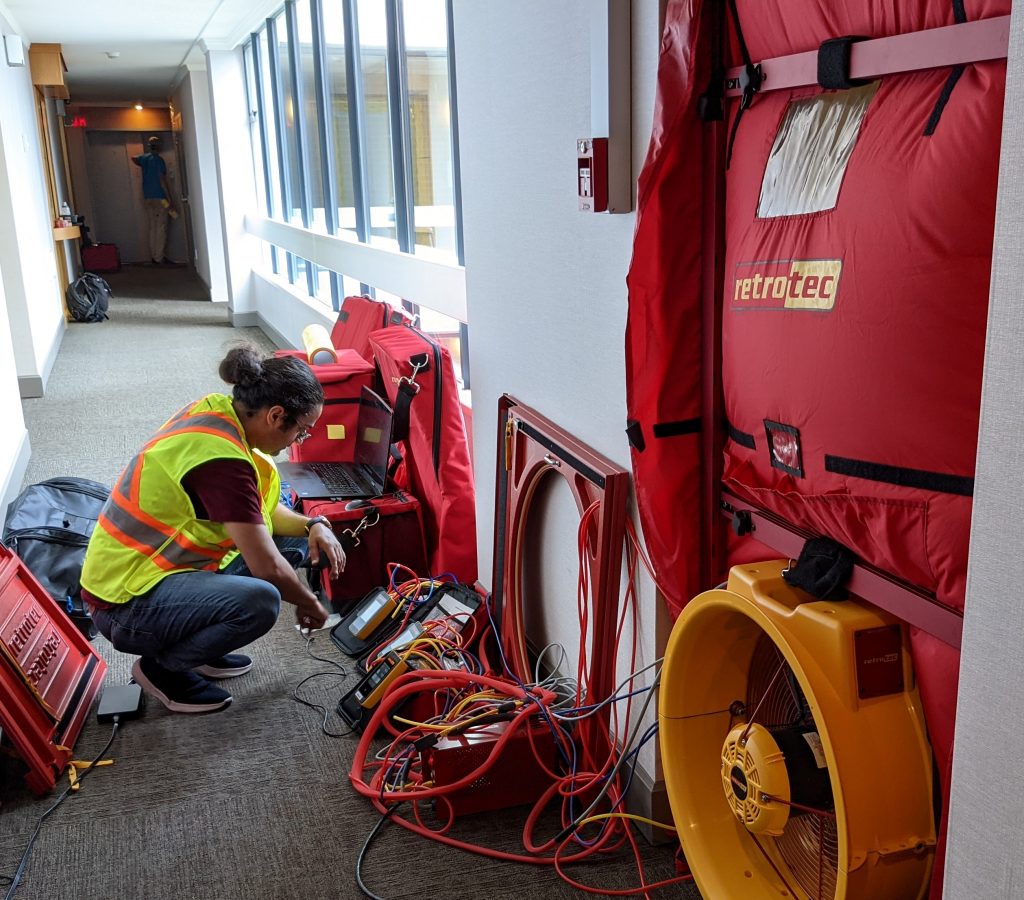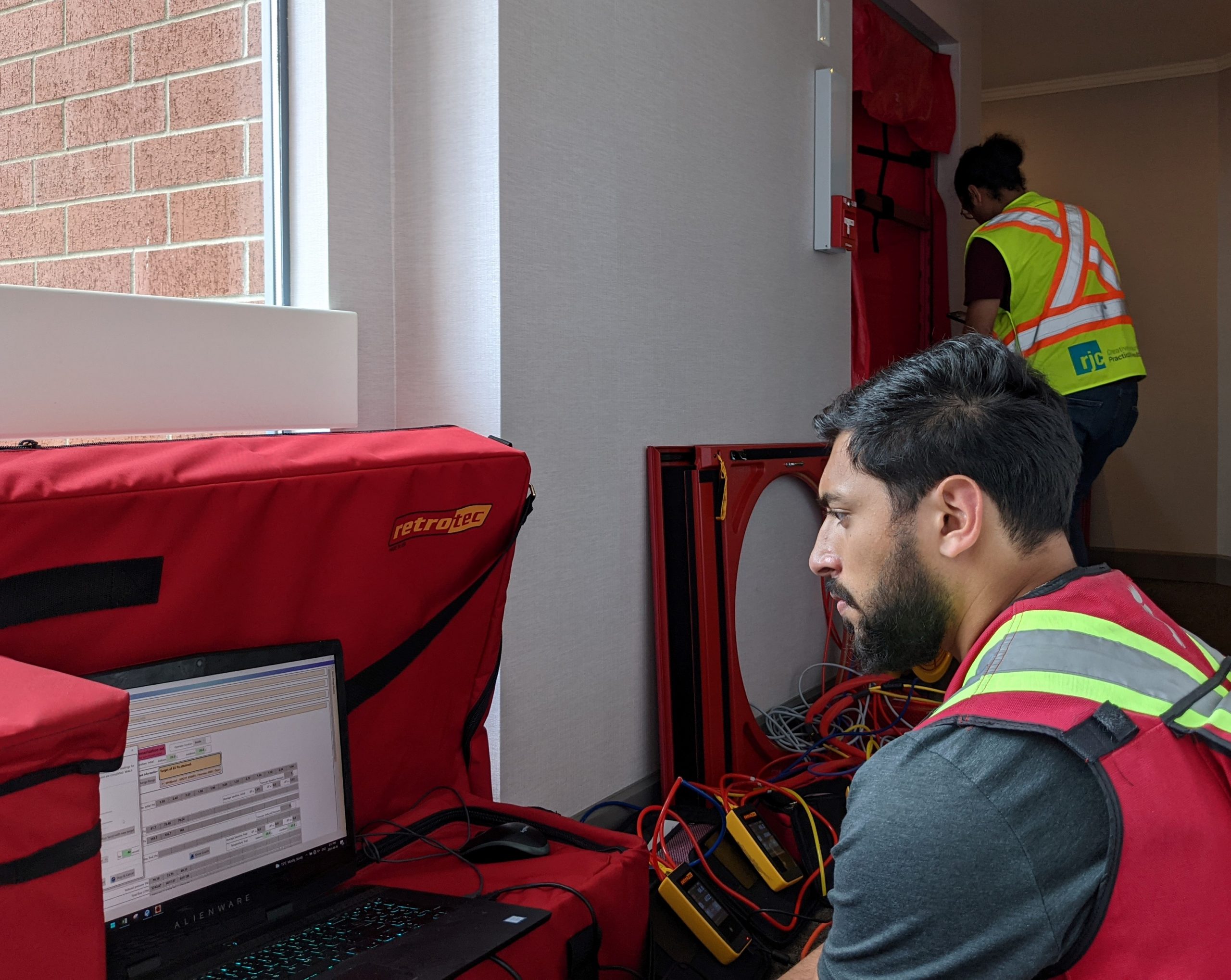In addition to navigating a deadly pandemic, improving energy efficiency is likely the top priority for today’s building owners facing costly, mandatory retrofits by 2025. Lowering GHG emissions is the collective goal, but those who comply with upcoming changes will also reap countless rewards, including reduced utility bills, increased property value, long-term resilience to climate change, and enhanced occupant comfort.
In fact, Veronica Ochoa, Building Performance Project Designer with RJC Engineers, argues that building managers and owners should be proactively seeking out government grants and other means to reduce energy consumption prior to the mandatory targets—otherwise they’ll risk being left with stranded assets.
“Canada is among the top ten greenhouse gas emitters, and together these countries emit over two-thirds of the overall global GHG emissions,” she says. “With emissions from buildings in Canada making up 18% of our GHG emissions, energy efficiency is the most important first step to reducing them. The benefits will compound as the government rightly envisages the crusade against climate change as an opportunity to provide jobs, increase manufacturing and social value by having Canadians benefit from lower utility bills and more resilient buildings.”
If you are the owner of an aging asset, chances are you’ve already begun your energy efficiency journey and are well on your way to a resilient, greener future. But for those still at the starting gates, or looking for a few additional ways to save energy, here are Ochoa’s top five recommendations for easy wins to improve the energy efficiency of a building:
1. Lighting equipment
Replacing existing lighting equipment for more efficient lighting is something all owners of aging buildings should do if they haven’t done so already. According to a study by Natural Resources Canada, retrofitting lighting equipment was the most frequent energy efficient renovation upgrade performed by building owners during the study period, and has long been considered a “low hanging fruit” of retrofits.
2. Lighting controls
An even better win, Ochoa says, is to supplement efficient lighting with lighting controls. “One would think replacing efficient lighting would be coupled with controls, however the same NRCan study shows that this measure only came in at fifth place. Occupancy sensors and/or daylighting controls can help manage energy consumption and limit its use to only when needed.”

3. Commissioning
A proper commissioning process for building mechanical, lighting and enclosure systems ensures that the systems operate in line with manufacturers’ recommendations and in accordance with the design intent and owner’s project requirements. This makes it a winning investment on the energy efficiency front.
“Timely filter replacements, adequate temperature set points and other measures ensure the building makes the most of what is available,” explains Ochoa. “This will help the building perform at its most efficient for the service life of its components until the time comes for them to be replaced. Replacements and upgrades are recommended to be done in conjunction with various building functions (e.g., envelope and systems, lighting, etc.) to result in an integrated solution.”
4. Temperature set-points
Another operational win is to lower the temperature set-point used in the make-up air (MUA) unit. According to a B.C. Housing study on energy use in mid- to high-rise MURBs, most energy is used in heating outdoor air for ventilation purposes. The study found that the outdoor air in a large sample of the analyzed buildings was heated to a temperature greater than 20 degrees Celsius, which is higher than needed for corridors and could be reduced to 15 degrees. This adjustment lowered MAU consumption by about 21% and resulted in a building-wide savings of 12%. While Ochoa warns that energy reduction variations will happen depending on climate zone, building type and systems, it will result in a valuable savings.

5. Energy modelling
Last but not least, the “smart, overall win” according to Ochoa, is to engage a building performance engineer to undertake a calibrated energy model. This, she says, will lead to deeper insights into how energy is used in the building and to recommend energy saving strategies that work well operationally or identify elements that need replacement or retrofitting.
“The building performance engineer may be able to provide guidance on existing grants or loans available for the improvements and to undertake simple pay-back calculations,” she says. “They may also be able to undertake thermal comfort assessments to better inform of the compound benefits of any retrofit solution.”
Educating tenants & residents
The saying “out of sight, out of mind” applies perfectly when it comes to building energy consumption—particularly the “shared kind” for which occupants have no visibility and for which they are not directly billed. Ochoa says educating tenants and residents should be an important piece of any energy efficiency strategy, yet it’s often overlooked. In a condominium building, for instance, reducing common energy use may result in lower strata fees or prevent these fees from increasing as often.
“Retrofitting smart meters or switching to energy-as-a-service (EaaS) model will increase transparency and visibility of energy use,” Ochoa says. “Occupants need to be aware of their consumption patterns and energy costs to be nudged by apps or reminders in their meters about when to take actions at the ‘right’ time. These actions can vary from when to charge their EVs to when to run the dishwasher, and other behaviours that will result in lower bills for them, while in general, lowering emissions.”
Essentially, Ochoa encourages visibility when it comes to tenants’ energy use, as this will only help them make better, informed decisions. In conclusion, she says, “By engaging a building performance engineer, asset managers can identify opportunities for improvement in their portfolio and benchmark their buildings with their peers.”
Find out more by visiting www.rjc.ca or by contacting Veronica Ochoa directly at vochoa@rjc.ca.









